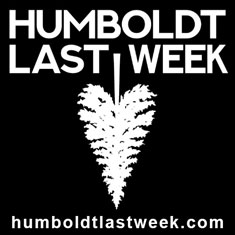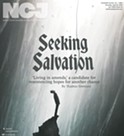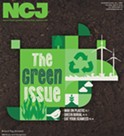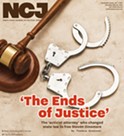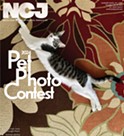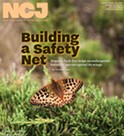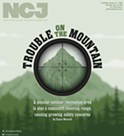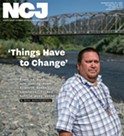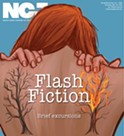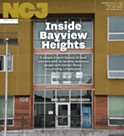Bye, Bye Night Sky
Light pollution in Southern Humboldt
By Linda Stansberry [email protected] @lcstansberry[
{
"name": "Top Stories Video Pair",
"insertPoint": "7",
"component": "17087298",
"parentWrapperClass": "fdn-ads-inline-content-block",
"requiredCountToDisplay": "1"
}
]
Dear neighbors,
We live in a lonely place. When I was a kid, I'd sit on our porch with only the radio for company and let the big dark swallow me up. The mountains that framed the Mattole Valley bit into the star-strewn sky like dark, crooked teeth. That wild land, owned by the Bureau of Land Management or old ranching families, was empty enough to make you feel like you were the only person on Earth. Far across the river, there was a smattering of household lights — neighbors with whom we shared weather reports over the CB radio and occasionally forded the river to visit with firewood. From the brightness of those lights I could tell who, like us, used kerosene lamps, who was close enough to the county road to be on the grid and who must be using that most precious of luxuries — bringer of television and clean clothes — a generator. In the midst of the darkness, those tiny, twinkling lights were a reminder that there were other hearths and other homes among the ubiquity of trees and sky. Twenty years later, some things are better and some things are worse. Cell phones and solar panels make rural living less dark and lonely, but half of our neighbors have been replaced by strangers. And the woods look like they're on fire.
The photo included with this article was taken by Kyle Keegan, who lives in Salmon Creek. It is of the upper portion of Mattole Canyon Creek, as viewed from Elk Ridge. It is one of the more extreme examples of greenhouses lit by artificial sunlight to prolong the growing season, but is far from an exception to what you'll now see in many rural parts of Humboldt County, where marijuana producers are trying to trick their plants into thinking that summer has begun many months ahead of schedule. It's only the latest indignity heaped on the place we all claim to love: There are no longer elk on Elk Ridge, nor spawning salmon in Salmon Creek and, soon, there will be no shadows in Mattole Canyon Creek. From other vantage points, Keegan says, the glow of greenhouses equal that of a small city. Small valleys look like they have the moon caught in their necks. The horizon is smudged, the stars erased.
Keegan, myself and other neighbors may risk being accused of NIMBYism for mourning the loss of our night skies. Progress is progress, and over the last decade I watched the twinkling lights of homesteaders freckle our ridges in increasing numbers, first with dread, then with some small optimism. You become friendly faster out here because you have to. Ours is a lonely place. Strangers become neighbors through community barbecues and volunteer firefighting, and newcomers are often folded in and educated gently on how to get along. And where neighborly nudges fail, legislation will (ostensibly) prevail.
"I believe that every single 'lightshow' you see after dark is in violation of [the Medical Marijuana Land Use] ordinance, which calls for International Dark Sky standards," says Humboldt County 2nd District Supervisor Estelle Fennell. "I believe the time for staying quiet about this kind of intrusion into our environment should be over. Our community needs to speak up."
Growers, Fennell says, should cover up. Many do, Keegan notes, shielding the impact of the light out of respect for their neighbors and the landscape. A restorationist for more than 20 years, Keegan says native flora and fauna are adversely affected by the spillage of artificial sunlight, which disrupts their natural circadian rhythms. The impacts of light pollution on amphibians, nocturnal predators, plants and their pollinating suitors have been well documented in scientific literature.
As with many things related to our region's green rush, the practice of lighting up the night has happened too quickly, and with too little oversight, to be properly studied. Keegan attributes its spread to "cultural mimicry" and its persistence to the increasing number of growers without community ties or neighborly instincts. Many of the light systems are on timers, he says, and people just aren't making the extra effort to cover up once night has fallen.
The county's recent medical marijuana ordinance includes language regulating light spillage, with enforcement coming from the Humboldt County Planning Division. But, of course, these are only for grows that are licensed, and it relies on the often-dubious power of bureaucracy to police what should be common courtesy. Keegan and others believe that real change might come down to the power of shame.
"The scale and inertia of this industry is exceeding regulation," he says. "We'll have to deal with it as we did in the past, with social enforcement. Now, if you put a pump in the upper Mattole, it's completely unacceptable. It should be the same if you're stealing the stars from the sky."
Last weekend my little nephew and I took binoculars and watched two bald eagles build a nest in a snag overlooking the Mattole River. The giant greenhouses are commonplace to him; at 10 years old, he's never seen anything else. I hope watching the eagles is something we can continue to do; light pollution is an increasingly common cause of avian deaths. And I hope he grows up in a place where we know and trust our neighbors. Those twinkling lights have mostly been replaced by eerie, sanitized beams. They no longer look friendly; they look alien.
http://www.lightpollutionmap.info/#zoom=10&lat=4871173&lon=-13754673&layers=B0TFFFF
Comments (2)
Showing 1-2 of 2
more from the author
-
Lobster Girl Finds the Beat
- Nov 9, 2023
-
Tales from the CryptTok
- Oct 26, 2023
- More »






